MCQ ON POPULATION class 12 for NEET | POPULATION class 12 | MCQ POPULATION with Answer | Check the below NCERT MCQ question for class 12 Biology based on the with Answers.

MCQ ON POPULATION class 12 for NEET
MCQ on POPULATION class 12 Biology with answers were prepared based on the latest pattern. We have provided class 12 Biology MCQs questions on POPULATION with Answers to help students understand the concept very well.
MCQ ON POPULATION is useful for NEET / CSIR / UGC / CBSE / ICSE / AIIMS / EXAM / AFMC EXAM / STATE LEVEL MEDICAL EXAM 2022-23, 2023-24
Introduction:
In nature, we rarely find isolated, single individuals of any species , majority of them live in groups in a well defined geographical area, share or compete for similar resources , potentially inte breed and thus constitute of population. Although the term interbreeding implies sexual reproduction, a group of individuals resulting from even asexual reproduction is also generally considered a population for the purpose of ecological studies. All the cormorants in a wetland , rats in the abandoned dwelling, teak wood trees in a forest tract , bacteria in a culture plate and lotus plants in a pond are some example of population. Population ecology is important area because it links ecology to population genetics and evolution.
MCQ ON POPULATION class 12 for NEET
1. Proportion of young individuals is highest in case of
(a) Declining population
(b) Stable population
(c) Both a and b
(d) Expanding population
Ans (d) Expanding population
2. The competition is the most severe between two
(a) closely related species growing in different niche
(b) closely related species growing in the same habitat
(c) distantly related species growing in the same habitat
(d) distantly related species growing in the different Niche
Ans. (b) closely related species growing in the same habitat
3. Apoculation between equal number of births and deaths will show
(a) acceleration phase of growth
(b) plateau phase
(c) exponential growth phase
(d) initial phase of growth
Ans. (b) plateau phase
4. The some total of the population of the same kind of organism constitute
(a) Colony
(b) genus
(c) community
(d) species
Ans.(d) species
5. Competition is severe in a population that has distribution
(a) irregular
(b) uniform
(c) random
(d) nonrandom
Ans.(a) irregular
6. The abundance of species population within its habitat is called
(a) Absolute density
(b) Regional density
(c) Relative density
(d) Niche density
Ans.(d) Niche density
7. In a population rate of addition of new members is higher than the rate of individual lost .It shows
(a) zero population growth
(b) declined growth
(c) exponential growth
(d) none of the above
Ans.(c) exponential growth
8. Population of an area tends to increase when
(a) reproductivity decreases
(b) immigration increases
(c) Emmigration occurs
(d) predation increases
Ans.(b) immigration increases
9. A force that acts against maximum population growth is
(a) population pressure
(b) carrying capacity
(c) saturation point
(d) environmental resistance
Ans. (d) environmental resistance
10. After exponential increase population become stagnant the growth curve is
(a) J- shaped
(b) S-shaped
(c) Fluctuating
(d) Circular
Ans. (b) S-shaped
11. Human population shows
(a) J- shaped growth curve
(b) Z- shaped growth curve
(c) S- shaped growth curve
(d) All the above
Ans.(c) S- shaped growth curve
12. Permanent decrease in population would occur due to
(a) migration
(b) natality
(c) Emigration
(d) Mortality
Ans . (c) Emigration
13. If green plants are removed from an aquarium then the fishes will
(a) die
(b) increase in number
(c) decrease in size
(d) not be affected
Ans.(a) die
14. Transition zone between two communities is
(a) ecotone
(b) ecad
(c) ecotype
(d) keystone
Ans. (a) ecotone
15. Organism spending most of the time in a transitional area between the two community are
(a) keystone species
(b) critical link species
(c) exotic species
(d) edge species
Ans.(d) edge species
16. Increase in number of individuals in a population represents
(a) Natality
(b) Mortality
(c) Density
(d) Diversity
Ans.(c) Density
17. Population where pre – reproductive animals occur in large number is
(a) Declining
(b) Stable
(c) Fluctuating
(d) Growing
And.(d) Growing
18. A obligate root parasite is
(a) viscum
(b) striga
(c) Loranthus
(d) Rafflesia
Ans. (d) Rafflesia
ALSO READ:-
● YOU CAN WATCH BIOLOGY SIR Youtube channel
19. Different communities appearing and replacing one under are called
(a) Climaxe community
(b) seral community
(c) Serial community
(d) Successive community
Ans.(b) Seral community
20. Myrmecophily is characterized by
(a) plants harbouring ants
(b) Plants storing food underground
(c) Plants imitating the habitat of animals
(d) Plants with small leaves
Ans.(a) Plants harbouring ants
21. Psammophytes are plants growing on soil
(a) Alluvial
(b) Sandy
(c) Alkaline
(d) Acidic
Ans.(b) Sandy

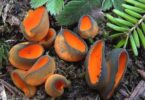
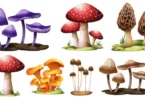
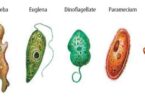

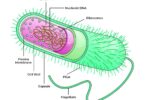
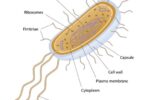
Leave a Comment